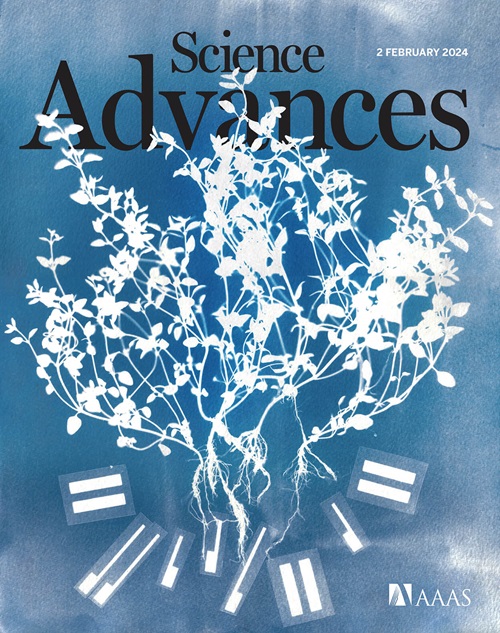用于可调触觉能量收集器的压缩光滑表面组装的两亲体。
IF 11.7
1区 综合性期刊
Q1 MULTIDISCIPLINARY SCIENCES
引用次数: 0
摘要
从环境运动中提取能量的一个反复出现的挑战是,当界面经历动态压缩时,设备必须保持高收集效率和积极的用户体验。我们展示了小的两亲分子可以通过在材料表面组装成特定的构象来调节摩擦、触觉和摩擦电性能。在压力下形成多个滑动面的分子,特别是通过π-π堆叠形成的分子,比那些形成无序介观结构的分子产生的摩擦低80 - 90%。我们提出了一个尺度框架,为他们的摩擦减少性能,说明附着力和接触力学。两亲体涂层的表面易于抵抗磨损并产生明显的触觉,人类更喜欢更滑的材料。另外,摩擦电输出通过使用具有高电子亲和性的两亲体得到增强。由于设备的采用与减少摩擦和吸电子潜能有关,在压力下自组织成光滑平面的分子代表了大规模推进触觉能量收集器发展的一种简便方法。本文章由计算机程序翻译,如有差异,请以英文原文为准。

Compressing slippery surface-assembled amphiphiles for tunable haptic energy harvesters
A recurring challenge in extracting energy from ambient motion is that devices must maintain high harvesting efficiency and a positive user experience when the interface is undergoing dynamic compression. We show that small amphiphiles can be used to tune friction, haptics, and triboelectric properties by assembling into specific conformations on the surfaces of materials. Molecules that form multiple slip planes under pressure, especially through π-π stacking, produce 80 to 90% lower friction than those that form disordered mesostructures. We propose a scaling framework for their friction reduction properties that accounts for adhesion and contact mechanics. Amphiphile-coated surfaces tend to resist wear and generate distinct tactile perception, with humans preferring more slippery materials. Separately, triboelectric output is enhanced through the use of amphiphiles with high electron affinity. Because device adoption is tied to both friction reduction and electron-withdrawing potential, molecules that self-organize into slippery planes under pressure represent a facile way to advance the development of haptic power harvesters at scale.
求助全文
通过发布文献求助,成功后即可免费获取论文全文。
去求助
来源期刊

Science Advances
综合性期刊-综合性期刊
CiteScore
21.40
自引率
1.50%
发文量
1937
审稿时长
29 weeks
期刊介绍:
Science Advances, an open-access journal by AAAS, publishes impactful research in diverse scientific areas. It aims for fair, fast, and expert peer review, providing freely accessible research to readers. Led by distinguished scientists, the journal supports AAAS's mission by extending Science magazine's capacity to identify and promote significant advances. Evolving digital publishing technologies play a crucial role in advancing AAAS's global mission for science communication and benefitting humankind.
 求助内容:
求助内容: 应助结果提醒方式:
应助结果提醒方式:


